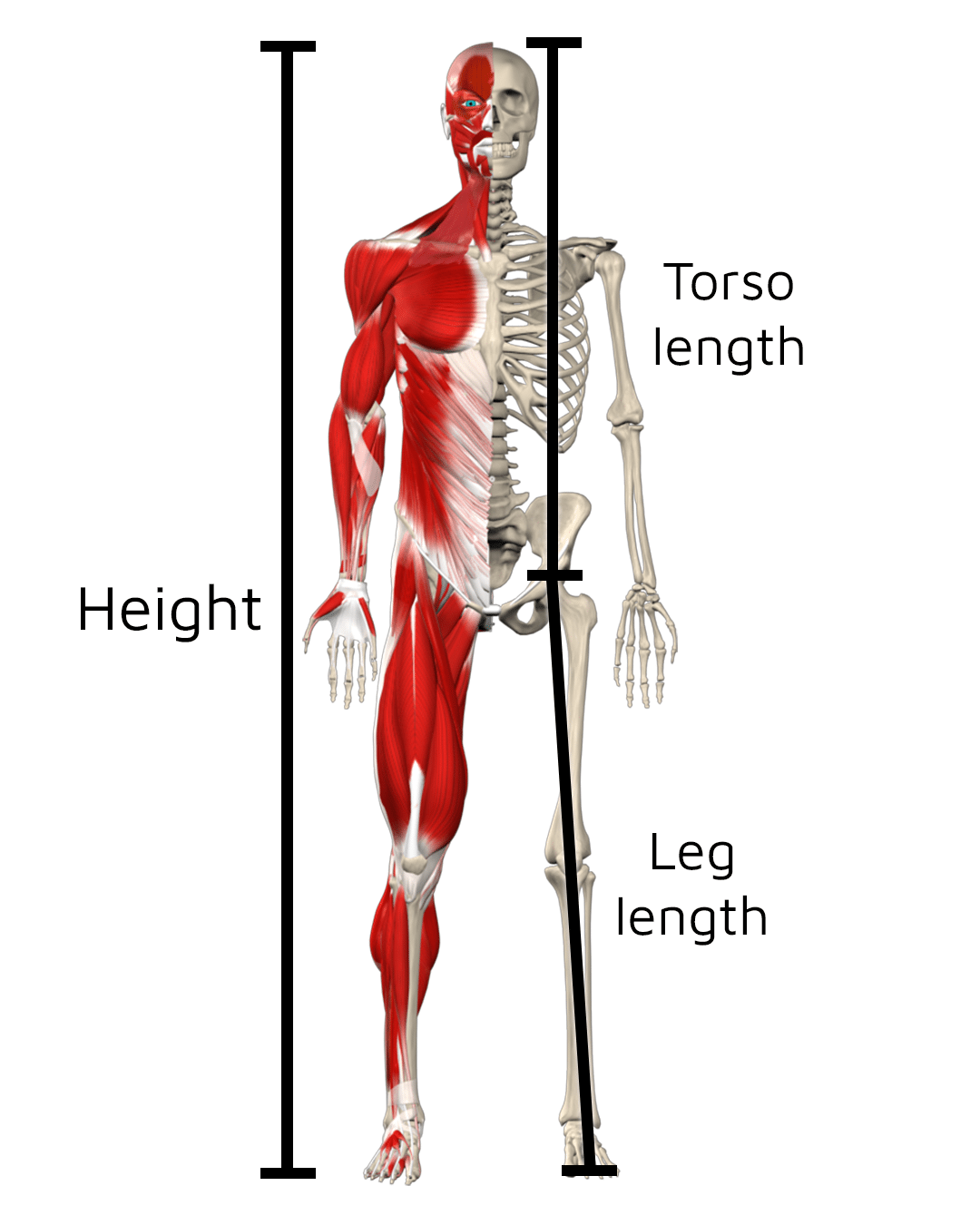Have you ever wondered why certain weightlifters appear to thrive in specific exercises while performing averagely in others? The key often lies in their body proportions, significantly influencing their performance.
Regarding the deadlift, your body’s structure and proportions play a pivotal role in determining your starting point and the distribution of leverage on various joints. In this Muscle and Motion article, we will delve into how your body’s unique structure and proportions can impact your deadlifting technique and help you decide which type of deadlift might be most suitable for you.
Why is it important?
The barbell deadlift is a popular exercise and one of the three lifts in competitive powerlifting. Given the impact of individual body structure on the initiation of the deadlift, it’s crucial to recognize that there isn’t a universally “correct” way to begin the deadlift. The variation in our body structures leads to differences in how we initiate the deadlift, making it important to understand and accommodate these differences.
Before proceeding to read this article, we strongly recommend that you first read our article on proper deadlift technique. The information shared in that article will provide a valuable foundation for understanding the concepts presented in this one.
The influence of body anthropometry on deadlift starting position
When thinking about the starting position for a deadlift, the appearance and execution are significantly shaped by a lifter’s body proportions. Many factors can affect how this initial position appears, including arm length, hip mobility, pelvic structure, and more. In this article, our emphasis will be on two key factors that can influence your deadlift starting position:
- Limb length
- Torso length
It’s important to note that conventional deadlifts may not always be the best approach to address these factors. What might seem like limited mobility or flexibility could actually be due to your body’s unique anthropometric characteristics, which can restrict your ability to achieve certain positions. Let’s delve into each of these factors and seek potential solutions.

* Note: Please enter values in , for example:
Textbook deadlift torso leg relationship
Before we begin, it’s important to grasp the textbook starting position for a standard deadlift. In this scenario, the individual has a balanced proportion between their leg length and torso. The barbell should be positioned at the midpoint of the foot, and the shoulder blades should be aligned directly above the barbell.

In a study conducted by Hales in 2020, researchers examined how the lengths of a person’s torso, legs, and arms relate to their overall height. The study found that if your torso accounts for more than 32% of your total body length or if your legs make up more than 49% of your overall body length, it can potentially impact your deadlift technique.
To check the ratio between the torso and the leg, use a measuring tape and measure:
- Torso length: Start at the hip bone and measure to the top of the head
- Leg length: Start at the hip bone and measure to the floor

Long Legs Or Short Torso
When an individual has proportionally longer legs compared to their torso, their hips are positioned considerably higher than what is typically seen in the textbook deadlift form.
To align their shoulder blades over the bar and the bar over the center of the foot, these individuals need to maintain a more horizontal torso orientation and their hip joints will begin in a more flexed position.
This body position may make it difficult for an individual with a short hamstring to do the deadlift properly.

Long Torso Or Short Legs
In contrast to the previous scenario, when an individual has a proportionally longer torso compared to their legs, their hips are notably lower than what you’d typically observe in the standard deadlift form.
Additionally, their knees will be in a deeper flexed position, requiring them to rely more on leg drive to lift the weight.
Were you aware that a study published in the J Sports Sci Med. Sep 2019
suggests that individuals with proportionally longer torsos may have an advantage when it comes to achieving higher one-repetition maximum (1RM) results in sumo squats.
In summary, it’s essential to acknowledge the distinctive anthropometric traits of each individual and adjust your approach accordingly. Instead of adhering strictly to a textbook deadlift starting position, focus on providing safer and more personalized techniques and knowledge to your trainees. Regardless of whether you possess longer legs or a shorter torso, there’s a deadlift variation that’s ideal for you.
Take your strength training and anatomy knowledge to the next level by downloading our Strength Training App today. The app will provide high-quality information on strength exercises, physiology, and anatomy, helping you maximize your progress and reach your full potential. Let us be your guide on this incredible fitness journey.
Written by Uriah Turkel, Physical Therapist and Content Creator at Muscle and Motion. Uriah’s areas of expertise are anatomy, kinesiology, sports rehabilitation, gait analysis, rheumatology, and pain neuroscience.


